I just turned 56 on March 11, and find myself paying closer attention than ever to what kinds of things get remembered, forgotten, overlooked, and flushed from public consciousness.
Living through this period, with another jaw-dropping wave of evictions devastating my circle of friends and acquaintances throughout San Francisco, the displacement of long-time residents is one obvious example of historic phenomena that get systematically flushed from the public record. I went to a discussion about the recently passed Proposition C Housing Trust Fund at SPUR a couple of weeks ago and there was nary a mention about the eviction crisis. Other politicians are trying to throw gasoline on the fire by passing a special ordinance to allow 2,500 units of “tenancy in common” apartments gain immediate condominium status. If it passes without the multi-year moratorium on condo conversions demanded by tenant activists, the wave of evictions is sure to accelerate beyond its already frenzied pace.
I consider my own building’s fuse to have been lit with the commitment of our landlady to state conservatorship… it’s probably only a matter of time before we’re evicted too, but with luck, maybe we can last another 2 years, or even 10! And we’re going to make our best effort to set up a Community Land Trust option for this building, so that maybe, just maybe, we can figure out a way to stay in San Francisco.
It would be a pity to be evicted from the city after working on San Francisco history for nearly two decades. Back in the first Gulf War era I felt strongly the amnesiac culture when friends I’d marched alongside couldn’t remember that we’d been part of a large anti-war movement in 1990-91. Now we’re at the 10th anniversary of the Iraq War and the media is mostly still repeating the history-flushing lies they promulgated at the time—that no one knew that the government was deliberately lying to get us into war. Actually San Franciscans shut the city down because tens of thousands of us knew perfectly well the venal lies that were hurtling us down a barbaric path. A decade later we can say “we told you so,” but it’s an empty effort, gaining no traction or amplification, and thus practically invisible, probably forgotten even by many of us who were in the streets in March 2003.
I popped in to the charming Canessa Gallery on Montgomery Street (the site of the original Black Cat Café in the 1950s, home on the ground floor to Jose Sarria and the first open gay scene in the City) where the Living New Deal Project is hosting a modest exhibit of New Deal art, including these recently made posters about the Post Office. They’ve been campaigning to save the many post offices around California and the country that are getting privatized and closed, and losing their architectural and artist treasures in the process. They are also promoting the idea of a New Deal Museum in the Presidio, so if you’re someone who likes to comment on such proposals, it’s open at the Presidio to chime in with your support.
You’d think there’d be plenty of support around here for cultural institutions like a New Deal Museum, a San Francisco Museum, etc., but the focus is on mega-office development. Here are is a shot showing the new massive Transbay Terminal building under construction (going five stories deep to make a place for the future high-speed train to come in… will it ever happen?), which will be far taller than anything previously built in San Francisco. Just a half block away the last of four Foundry Square buildings is being rapidly erected too, just one of the dozens of massive construction projects going on all over town.
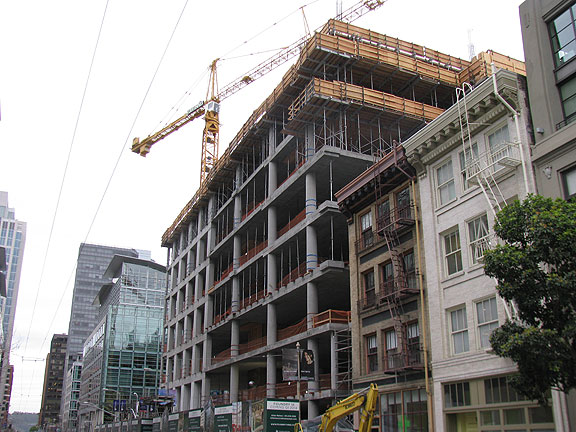
Foundry Square, the 4th corner to be filled by this development... one of dozens of massive building projects dominating San Francisco at the beginning of 2013.
Sat in on a meeting convened by the California Historical Society that brought together quite a lot of local museums and organizations, all to consider how to celebrate the 100th anniversary of the Panama-Pacific International Exposition—the World’s Fair that San Francisco hosted in 1915. It was an interesting first meeting in the sense that it offered a clear view of how history is “made” by the choices of curators, writers, archivists, museum directors, etc. Shaping San Francisco will participate in some fashion, so I look forward to fanning the flames of controversy as the time draws nearer.
Shaping SF had a table at the History Expo at the beginning of March, the 3rd annual event held in the Old Mint that is supposed to become a Museum of the City of San Francisco, but seems that it probably won’t ever get there under present management. The SF Museum and Historical Society has been spinning their wheels and spending millions for the past few years with very little to show for it. The Expo is their way to try to position themselves as the overarching organization encompassing the many local history groups and efforts. But what the Expo really demonstrates is how vibrant the diverse and decentralized community of local historians is, and how irrelevant to the actual work of producing histories, extending historical consciousness, engaging historical debates, etc. the SFMHS is.
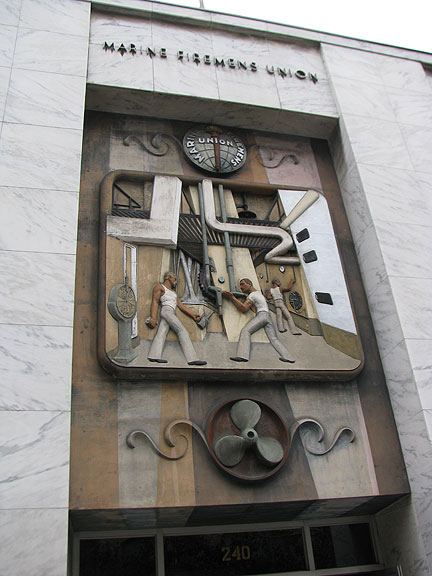
Remarkable 3D mural on the facade of the Marine Firemens Union on 2nd Street, now dwarfed by massive offices and hotels on every side.
While they’ve been churning through funds and resources, ostensibly to convert the Old Mint into a Museum, a brilliant exhibit that does a lot of what a local city history museum should do has opened at the Visitor Center of the Maritime Museum in the Argonaut Hotel in the Cannery at Hyde and Jefferson. It’s called “The Waterfront” and it’s a simply fantastic collection of displays, dioramas, artifacts, audio and video clips, and does a wonderful job of tracing the history of San Francisco—which after all, took place largely along the waterfront for most of its life until the mid-20th century.
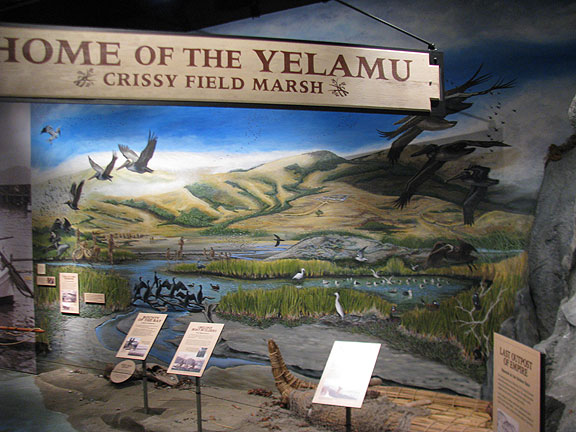
This new mural of a pre-Europeanized Bay Area greets you as you enter "The Waterfront" at the Maritime Museum's Visitor Center.
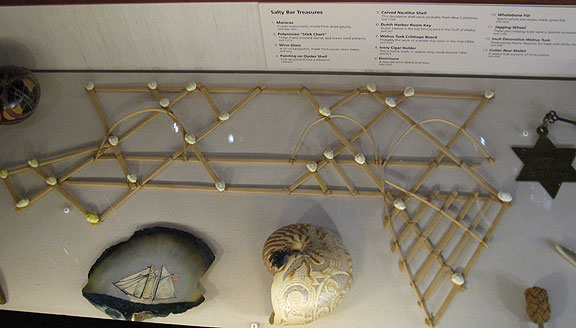
Mostly "The Waterfront" focuses on San Francisco's history, but this remarkable example of Polynesian navigational tools caught my eye. The white buttons are islands, and the sticks represent water currents and directions.
Meanwhile, the Exploratorium is about to re-open at its fancy new digs on Pier 15. In the Observatory’s 2nd floor my friend and colleague Susan Schwartzenberg has brought together the work of many scientists, artists, archivists (esp. the Prelingers, who have put together a library and a collection of new Atlases which are brilliant!), and others, to create a science-focused museum of San Francisco, the Bay, and the huge inland watershed that the Bay drains. Combining the maps, overlays, animated fog flows, tidal histories, global carbon flows, and much more, and one’s head begins to spin with more data than anyone can digest. But the profound depth of knowledge available about where we are and what’s happening to it, beyond the political boundaries and obsessive concerns of the petty politicians who have generally had their way here, is another dimension of what a local City museum ought to provide.
I had started to wonder if a Museum can actually still be interesting, and after visiting the Maritime Museum and the Exploratorium this week, I have to say definitely “yes!” But a proper history of San Francisco cannot be a shrink-to-fit approach that foregrounds self-congratulatory corporate histories at the expense of the dense and complicated stories that actually make up this City. Luckily, a lot of the best historical materials are already well installed around the town. Along the Embarcadero are several dozen pylons and cement installations, black-and-white striped with yellow panels showing historic photos and brief explanations. Elsewhere along the waterfront from north to south are various plaques placed in the sidewalks, like this one for Buried Ships.
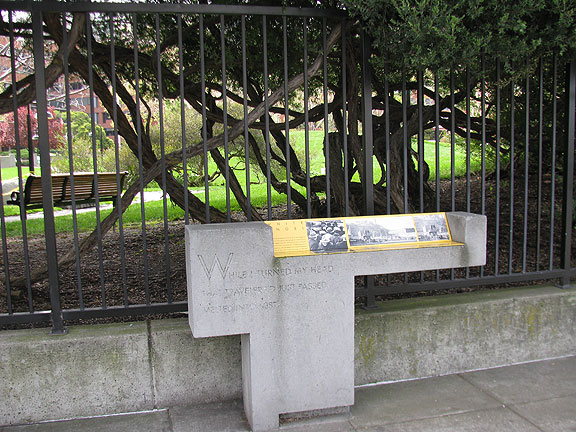
This installation tells about the White Angel Jungle that fed hundreds of down-and-out men during the Depression... the same site is now Levi's Plaza!
I just put the information on this installation into FoundSF here. A beautiful map of the buried ships under the City is in the “Waterfront” exhibition at the Maritime Museum too.
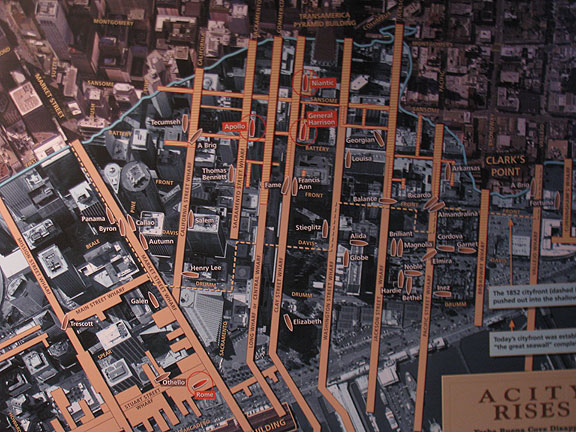
This is in an alcove with a fantastic time-lapse map of Yerba Buena Cove, a new one better than any I've seen before.
Between the Maritime Museum’s “The Waterfront” and the Exploratorium’s Bay Laboratory, we might wonder what need there is for a City Museum that is organized by an organization that is primarily concerned with shilling for the corporations that have dominated the City’s history? Why not just give the Old Mint over to the dozen organizations who are already producing, maintaining, and sharing the history of the city in a multitude of voices, styles, and methodologies?
I had fun a couple of weeks ago scouting with my pal Jason for his upcoming birthday ride. We rolled along the Oakland Estuary and came upon some nice historical surprises, including a relatively recent sculptural installation called “Sigame!” (Follow me!), which highlights famous women of Oakland history around its base. I’d snagged a pamphlet of walking tours around Fruitvale when Adriana and I visited the Peralta Hacienda last month, itself one of the oldest buildings in the area, once ensconced in the midst of many acres of orchards.
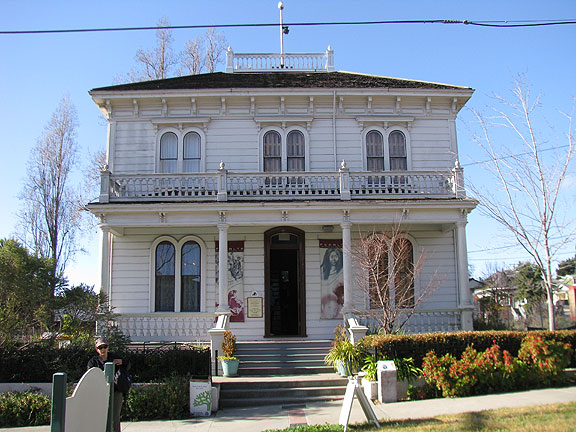
The Peralta Hacienda... well worth a visit, though it's not open very often. They have a great map of an indigenous village founded in the post-Mission era by remnants of Ohlone, Coast Miwok and others, at the spot where Pleasanton is today.
Later we cruised around “Jingletown,” a neighborhood divided by the Nimitz Freeway not far from the Fruitvale district, which was obviously discovered by artists more than a decade ago—the Institute of Mosaic Art looked well established there. When we went to take a close look at a big old cotton factory on 22nd Street, we found this plaque explaining how Jingletown got its name from the coins in the cotton workers’ pockets after they got paid… true or not? Not sure, but makes a nice story. We met a guy coming out of the building who was a self-styled local historian and he sent us to check out the Cohen-Bray House on 29th Street, a gorgeous uninhabited historic Victorian.

In 1895 these Portuguese immigrants made up the majority of the workforce at the California Cotton Mill.
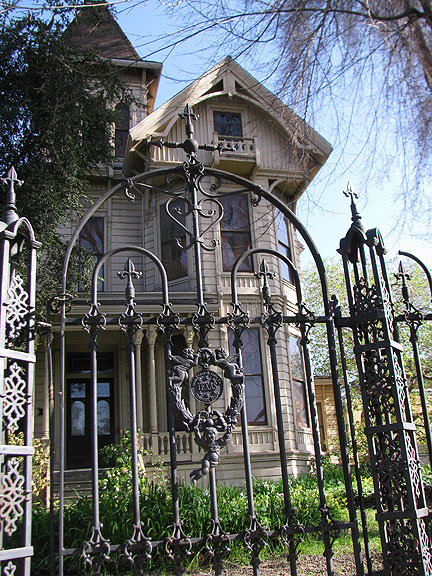
I loved this wrought-iron fencing, apparently made in Texas! but maybe it was just an ironworks called "Texas"...
This raven met me at the top of Twin Peaks when I climbed up there on my birthday. He was very noisy and it really felt like he was trying to tell me something. Maybe it was just happy birthday, or maybe it was a warning about the City slipping away and that we have to do something…. Wish I could speak “raven” so I knew!

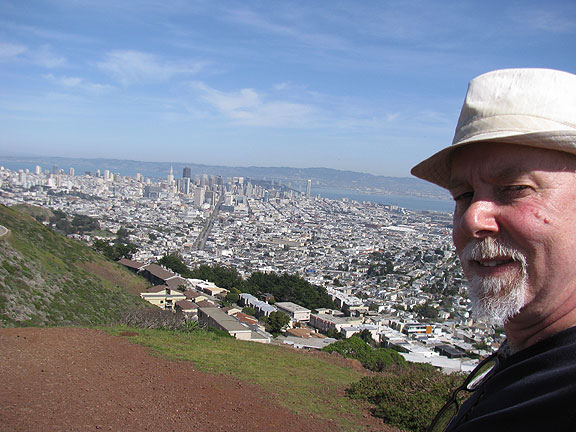

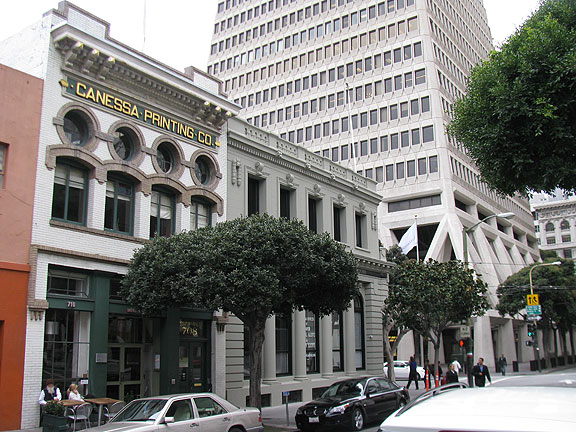

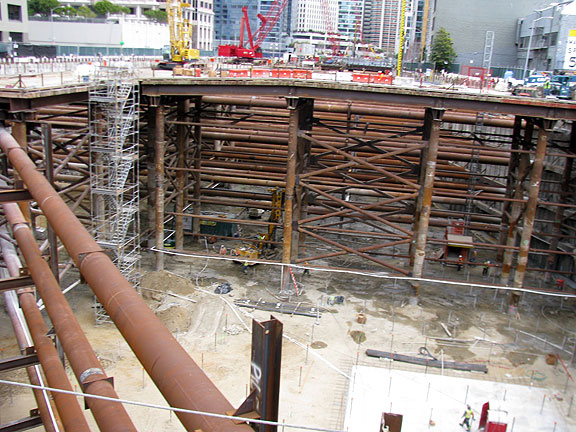
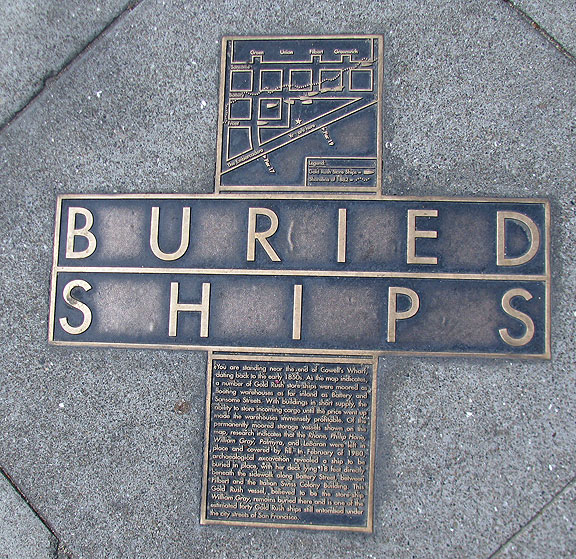

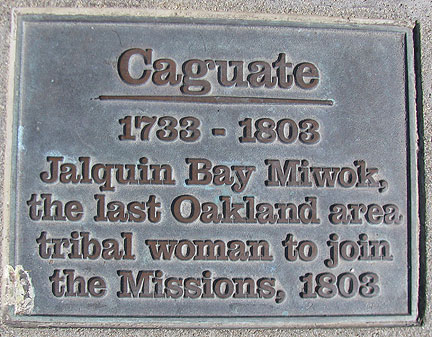
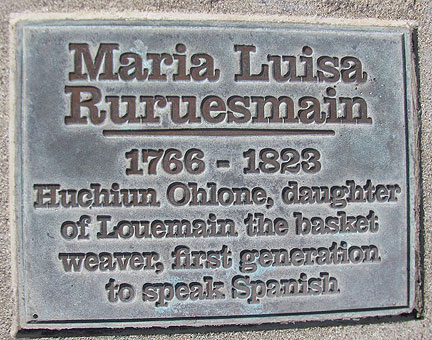
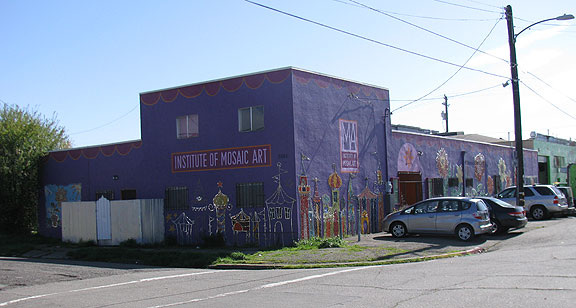

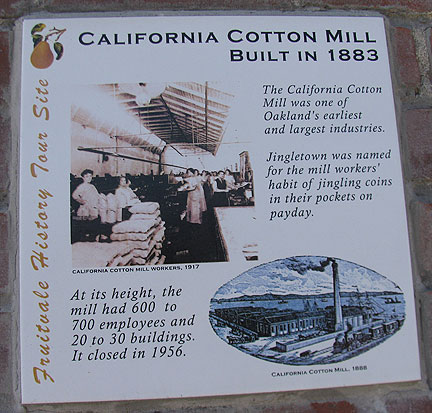
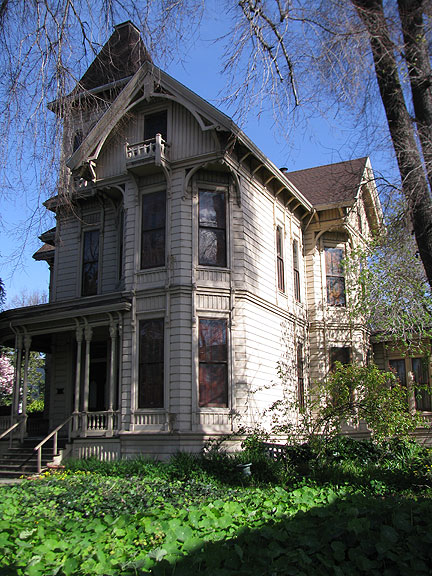

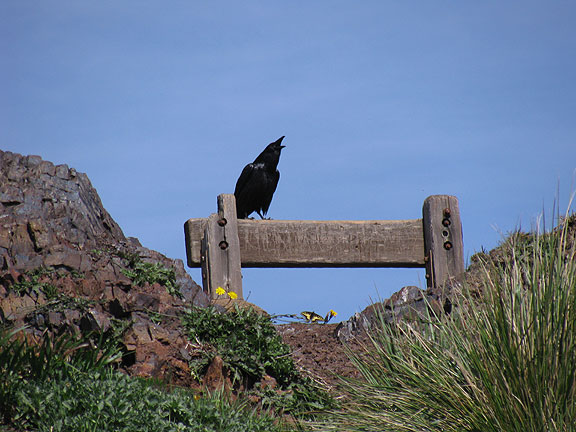











I guess I’m too focused on the heartbreak of this sentence:
It would be a pity to be evicted from the city after working on San Francisco history for nearly two decades.
What good is a museum to a city if the city cannot love its people?
Despite not having blogged much here, the proprietor’s words are still some of the best reporting on the state of empire.
Where do evicted folks go?
Thanks for all of this!
Turning 56 myself in a couple of weeks, and feeling much he same as you. After 35 years here in the city, I’m pretty sure I won’t be a San Franciscan by the end of 2013.
This is a great post–there’s so much awesomeness in here! I especially love that Marine Firemen mural. Happy birthday!
Happy Birthday, Chris! Belated but heartfelt. Many happy returns, my friend.